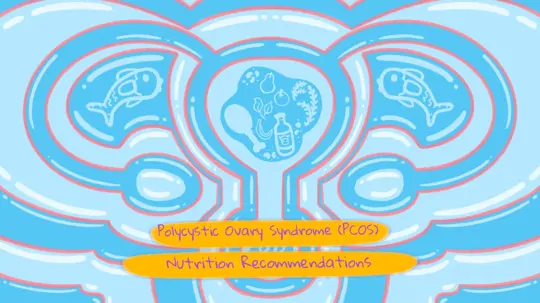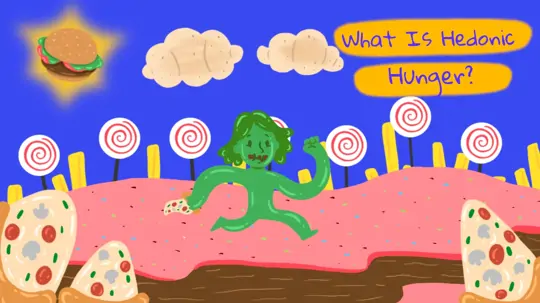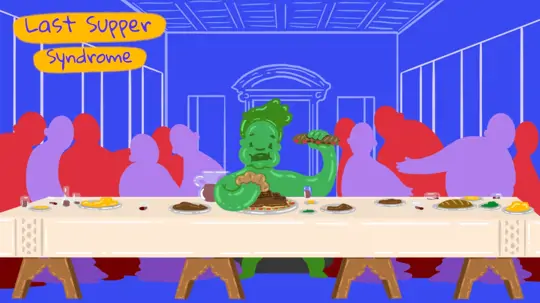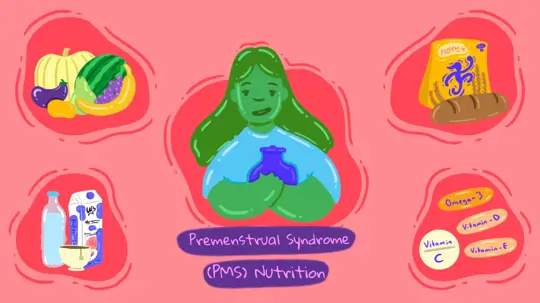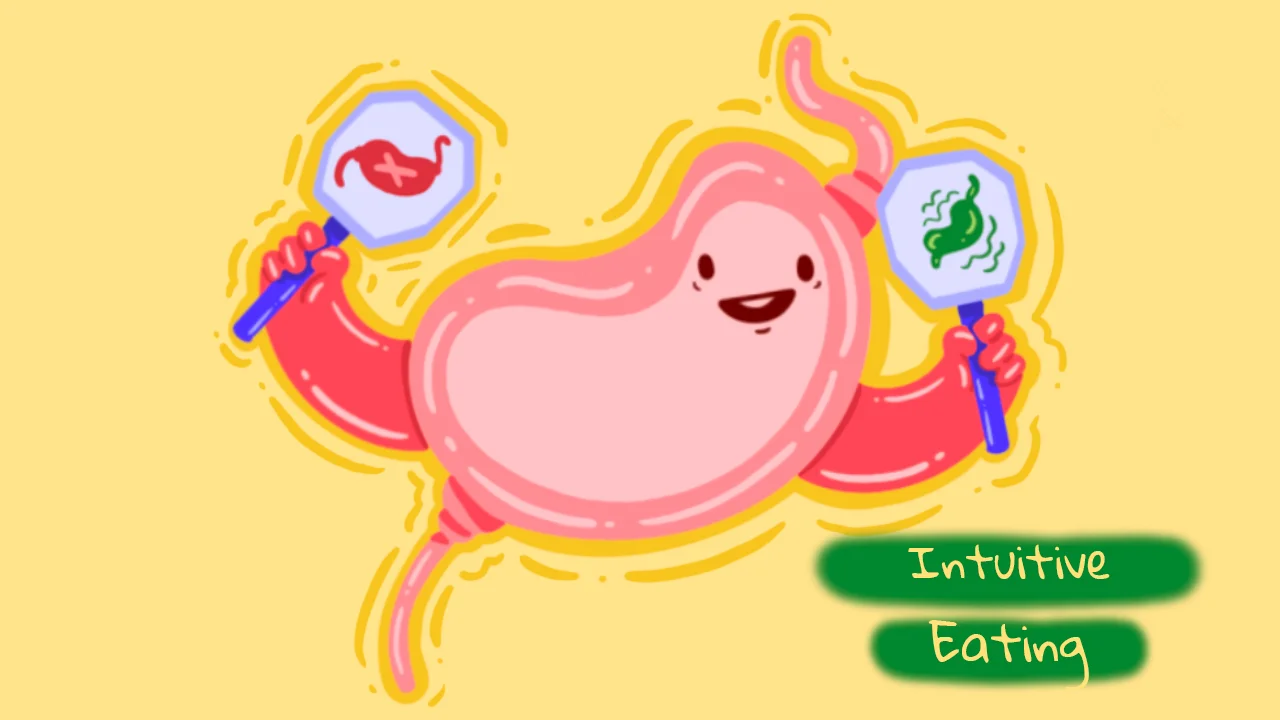
Start feeling better today!
Connect with your therapist today and take control of your life like our 850.000 happy clients.
Get StartedWhat is Intuitive Eating?
The concept of “Intuitive Eating” was first introduced in 1995 by two dietitians, Evelyn Tribole and Elyse Resch. Tribole and Resch noticed that their clients were trapped in cycles of weight loss and gain through traditional dieting approaches. They discovered that these cycles were harming their clients’ health and that individuals were no longer even aware of their own hunger and fullness signals.
Tribole and Resch define “Intuitive Eating” as the dynamic integration of the body, mind, and food. We can explain intuitive eating as knowing what type and how much food our body needs, and feeling mentally content and at peace while eating. Intuitive eating is a non-diet approach. It is a way of eating where individuals listen to their hunger and fullness cues. For example, when someone notices their stomach growling and eats as a result, that is an example of intuitive eating behavior.
Noticing fullness signals and stopping eating when full is also an example of intuitive eating. In essence, intuitive eating is about satisfying physiological hunger, providing the body with enough nutrients, and stopping when one feels full. Unlike traditional diets, there are no forbidden foods in intuitive eating. Individuals satisfy their physiological hunger without food restrictions by listening to hunger and fullness signals. Since there are no restricted or banned foods, people enjoy eating what they love without falling into a “diet mentality.” Intuitive eating is also associated with a positive body image.

Three Core Principles of Intuitive Eating
- Granting unconditional permission to eat
- Eating based on physical rather than emotional needs
- Eating in response to hunger and fullness cues
Granting unconditional permission to eat means individuals eat whatever food they want whenever they feel hungry. For example, that food may be a pizza one day or a cheese salad on another. The second principle is about eating not based on emotions, but to satisfy physical hunger. For instance, if someone eats chocolate to suppress feelings of stress before an exam, this behavior contradicts the principle of intuitive eating.
The third principle is actually a behavior we are born with. For example, when a baby is hungry, they cry, drink milk from their mother, and stop when full. Intuitive eating aims to restore our innate ability to eat according to hunger and fullness signals, which are often lost due to traditional and restrictive dieting practices.
To fully understand intuitive eating, we can illustrate the contrast with restrictive/traditional diets through an example: If someone craves pizza but says, “I’m on a diet, so I can’t eat pizza. Pizza is too high in calories. If I eat it, I’ll ruin my diet and all my efforts will be wasted. I’ll gain weight and be unhealthy,” and chooses not to eat pizza despite craving it — that’s a traditional diet mindset.
On the other hand, an intuitive eater in the same situation might say, “I feel hungry and I’m craving pizza. Yes, pizza might be high in calories, but eating it now won’t make me gain weight or become unhealthy. So, I’ll eat pizza until I feel full.” As seen in this example, intuitive eating helps individuals build a healthy relationship with food, enjoy their meals, and feel satisfied.
1. Intuitive Eating Helps Recognize Hunger and Fullness
Eating is essential for survival. Hunger is a signal from our body — a cue that nourishes us. According to traditional diet rules, hunger is terrifying because people believe that if they feel hungry, they will eat, and that may lead to weight gain. Contrary to this belief, hunger is a healthy and biological state that allows us to obtain the nutrients our bodies need.
To understand hunger, we must carefully pay attention to the body’s signals. For example, stomach growling and fatigue can be signs of hunger. However, some individuals may experience hunger with certain emotional states. Some may feel irritable when hungry, while others may not feel any emotional change. Therefore, hunger is highly personal, and only the individual can truly know when they are hungry.
Understanding fullness also requires attentively listening to bodily signals. Comfortable fullness refers to a state where the food in the stomach does not cause discomfort. Recognizing fullness can be challenging. One reason is the exposure to external stimuli while eating, which decreases food awareness. Nowadays, it’s common to check emails, watch TV, or text while eating. These distractions shift our focus and make it difficult to notice fullness signals.
2. Intuitive Eating Encourages Respect for the Body
Many people only view certain body types as healthy and label individuals as healthy or unhealthy based solely on their appearance, without examining blood markers, medical history, or dietary habits. This can lead many to feel ashamed of their bodies and develop a negative body image. Accepting our bodies as they are — and understanding that our shape is limited by our genetics — is very helpful. Our body shape, like our eye color, height, or shoe size, is genetic. Remembering that our arms allow us to hug loved ones, and our legs allow us to walk, can increase respect for our body and promote a positive body image.

3. Intuitive Eating is Not a Weight Loss/Gain Strategy
Intuitive eating is not a method for weight gain or loss. Instead, it is an approach that doesn’t label foods as bad, unhealthy, innocent, or clean — and allows all foods to be consumed. When starting intuitive eating, you may gain weight, lose weight, or maintain your current weight. Despite being promoted by some professionals as a weight-loss method due to its popularity, intuitive eating is never intended for that purpose. Rather than focusing on weight control, intuitive eating promotes sustainable health.
4. Intuitive Eating Supports Psychological Well-Being
Studies have shown that intuitive eating is positively linked to psychological well-being. In contrast, restrictive diets often lead to binge eating episodes. For example, if someone says, “I won’t eat any fast food until I lose 10 kilos, but once I do, I’ll eat three burgers and five pizzas,” they are highly likely to binge eat after reaching their target weight. Individuals who follow intuitive eating principles tend to form healthier relationships with food and experience fewer binge episodes, since they can eat what they want, when they want.
In one study, 61 adult participants followed intuitive eating principles for 10 weeks. The results show that intuitive eating is a non-dietary approach based on listening to hunger and fullness signals. This method aims to eliminate obstacles that hinder body awareness between the mind and body. Instead of focusing on weight loss, intuitive eating promotes behavior change. It is also used in the treatment of eating disorders. Although many studies have been conducted on intuitive eating, they mostly focus on young adults. More inclusive research covering the entire population is needed to understand its broader applicability.
References
- Cadena-Schlam, L., & López-Guimerà, G. (2014). Intuitive eating: an emerging approach to eating behavior. Nutricion hospitalaria, 31(3), 995–1002.
- Quansah, D. Y., Schenk, S., Gilbert, L., Arhab, A., Gross, J., Marques-Vidal, P. M., Gonzalez Rodriguez, E., Hans, D., Horsch, A., & Puder, J. J. (2022). Intuitive Eating Behavior, Diet Quality and Metabolic Health in the Postpartum in Women with Gestational Diabetes. Nutrients, 14(20), 4272. https://doi.org/10.3390/nu14204272
- Köse G, Tayfur M, Birincioğlu İ, Dönmez A. Adaptation Study of the Mindful Eating Questionnaire (MEQ) into Turkish. Journal of Cognitive-Behavioral Psychotherapy and Research. 2016; 5(3):125-134.
- Özkan, N. & Bilici, S. (2018). New Approaches in Eating Behavior: Intuitive Eating and Eating Awareness. Gazi Journal of Health Sciences, 3(2), 16-24.
- Tribole E, Resch E. Intuitive eating: A revolutionary program that works. 3rd edition, N.Y.: St. Martin's Press, New York 2012.
- Tylka T. Development and psychometric evaluation of a measure of intuitive eating. Journal of Counseling Psychology. 2006; 53(2):226-40.
